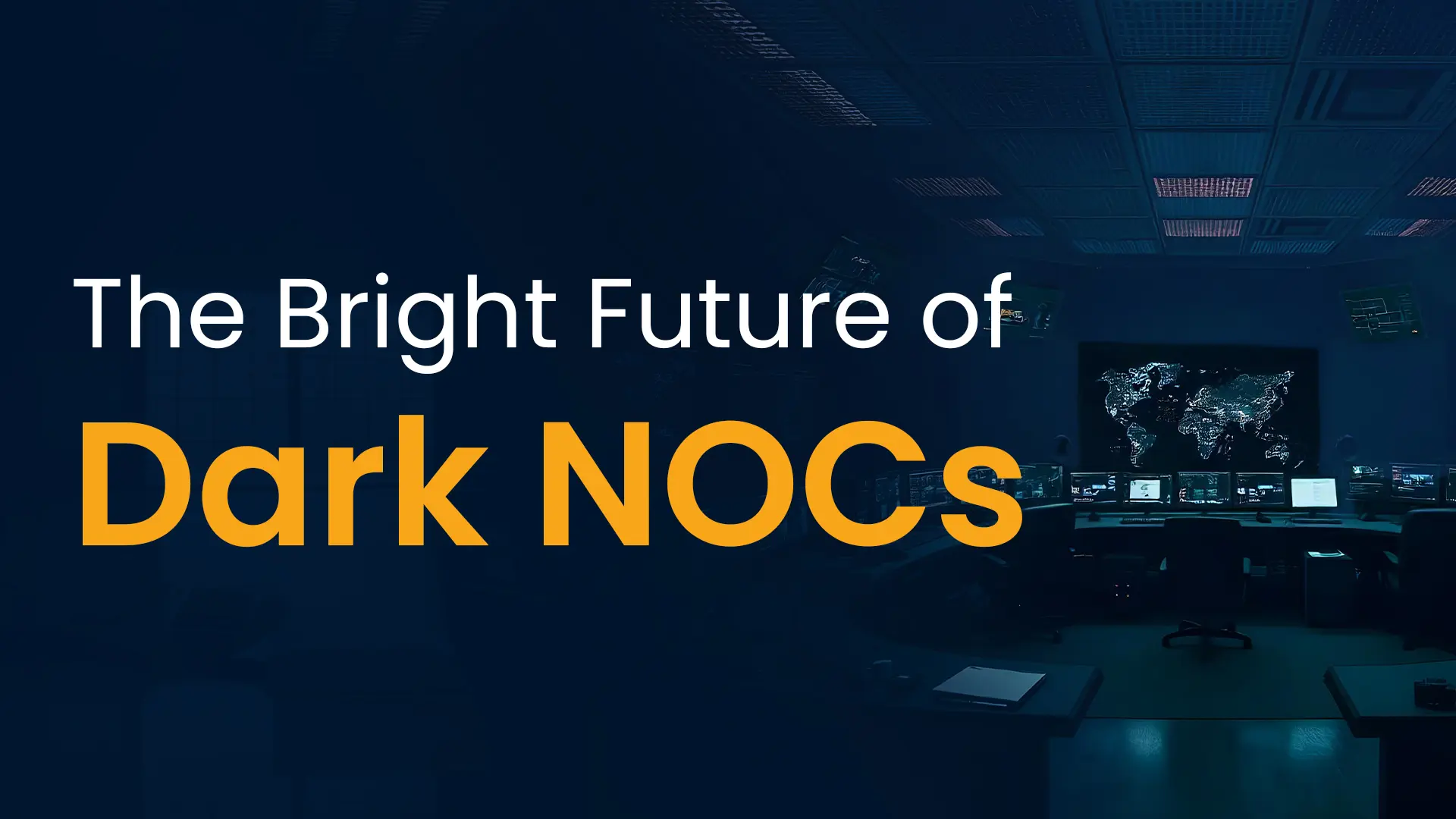Digitization entails disruption and a commitment to change. Despite the pressing need for change, enterprises still face many bottlenecks. For instance, while they have access to technology, they often do not have the skill sets to implement it.
Enter Global capability centers (GCCs). GCCs are now a key enabler for overcoming challenges and accelerating tech adoption in enterprises.
What are Global Capability Centers (GCCs)?
Global capability centers (GCCs), also known as Global in-house centers or simply captives, are dedicated offshore centers of large enterprises.
GCCs improve enterprise resilience and cater to today’s customers’ “always-on” expectations. Many multinational banks, for instance, make their operations infrastructure more resilient by distributing core operations through GCCs in different locations.
Digital operations thrive on agility and collaboration. The successful digital enterprise of today has two-speed architecture. The customer-facing front-end, delivering customer experience, moves fast. The transaction-focused legacy back end often cannot afford to run at the same speed as it often has regulations, contractual fine-prints, compliance obligations, data protection laws, and other speed breakers. GCCs enable companies to develop an agile and flexible architecture that reconciles the two-speed movements. Enterprises can use the GCC to enable high-speed deliverables, including shorter release cycles and rapid response.
GCCs as an improvement to the outsourcing model
GCC offshore captive centers help parent companies leverage the benefits of outsourcing. At the same time, it also overcomes the shortcomings of traditional outsourcing models. GCCs deliver speed, quality, efficient processes, better control, and deeper data insights, compared to outsourcing.
In traditional offshoring, large corporations outsource to third-party independent contractors or vendors. Such a move delivers cost and time zone advantages and improves access to talent. But enterprises lose control over the work. The third-party agent is rarely a direct employee and often juggles many clients. Work quality, priorities, and deadlines usually take a beating. Data risks and regulatory mandates further limit the viability of outsourcing.
The GCC model also enables enterprises to own their cognitive resources. GCCs operate as an extended arm of the enterprise and handle only the enterprise’s work. The dedicated nature of these centers enables the parent companies to entrust them with a broader range of functions.
Enterprises can direct their investments in new technology and training to GCCs to build intrinsic, in-house expertise. With outsourcing, the enterprise only rents cognitive assets.
GCCs have access to the same information and strategy documents as the parent. As such, there is better control over the process and the outcome. An outsourced employee, regardless of skill, has limited information and vision. They lack in-depth knowledge of context about the parent companies’ clients or priorities. As part of the enterprise, GCC employees have the business context and work towards achieving business objectives. Employees at GCC have a stronger value alignment with the parent company. Dedication, commitment, and regulatory issues are no longer concerns.
GCCs also unlock innovation possibilities. GCCs can handle end-to-end projects, from conception to testing and everything else. Since employees working in the GCC belong to the parent company, there is a high level of accountability.
The changing profile of GCCs
In the pre-COVID-19 era, GCCs evolved organically and mostly handled back office and support functions. They positioned as internal shared services for the parent company and delivered value through cost, capability, and capacity arbitrage.
At the start of the pandemic, GCCs faced an uncertain future like every other enterprise. However, the inherent resilience of the GCCs enabled a quick rebound, much faster than the main offices could rebound or adept.
The pandemic changed the business models of about every enterprise. Enterprises transformed overnight from centralized entities to globally distributed teams. With COVID-19 mandates shutting down head offices, GCCs assumed higher responsibilities. The availability of GCCs ensured business continuity. Employee productivity improved, and businesses could ensure the uninterrupted availability of their products and services.
Post-pandemic, the growth of GCCs has been on a steep incline. GCCs started to become strategic partners for their parent companies. The latest, tech-savvy GCCs add value to business-critical operations. They move up the value chain as a Center of Excellence (CoE) and progress from arbitrage centers overseeing support functions to automation and innovation hubs. They enable their parent companies to:
· Onboard digital technology fast and improve speed-to-market.
· Build advanced digital competencies, such as e-commerce capabilities.
· Become change agents. The transparency and control offered by GCC make them the change agents of choice.
Most of the C-suites now regard setting up GCCs as a strategic move. Businesses position their GCCs as an extension of the home office and a strategic capacity and capability-building platform.
Current GCC landscape in India
India is the leading center for setting up of GCCs. The country hosts over half of all the GCCs in the world. India is home to 1,300+ GCCs that employ 1.3 million+ individuals. A report by Deloitte and NASSCOM estimates GCCs in India to contribute 1% of India’s GDP. The report also estimates the combined revenue of GCCs in India to touch $60–$85 billion by the end of 2022. The corresponding figure for 2019-20 was a low of $33.80 billion. The GCC market in India will grow from USD 58 billion to 61 billion by FY2025. The number of GCCs in India will also increase to around 2000.
GCCs thrive in India not only due to arbitrage but also due to the ease of innovating and digital onboarding capabilities. India also has a vibrant talent pool with good leadership skills. Robust infrastructure, with high-speed, reliable broadband, is another big plus. There is good policy support for GCCs as well.
How GCCs promote enterprise resilience and agility?
The journey of GCC service providers in India and elsewhere revolves around the following key trends and imperatives.
1. Increased investment in technology resources
GCCs have become the tech hubs for their parent enterprises. Offshore GCC centers assume responsibility for end-to-end, cost-effective product development and almost always do a good job. Most parent companies move tech-heavy tasks such as developing apps to GCCs.
One of the key USPs of GCCs is its ability to provide scale to operationalize digital strategies. Most GCCs in India responded to the challenges posed by the pandemic well. They shifted their ERP and legacy apps to the cloud in double-quick time. They also invested in emerging technologies such as advanced analytics, artificial intelligence, and machine learning technologies.
In the future, GCCs will continue to invest in the latest technologies. They will strengthen their infrastructure in data mining and acquire other cutting-edge tools. Parent companies will rely on GCCs to execute tech-heavy and data-centric projects.
EY’s GCC (Global Capability Center) Pulse survey 2021 reveals that 74% of GCCs serve their parent companies as global hubs for digital skills and delivery.
2. Seamless transition to the hybrid working model
Hybrid work is not going away. The technology for remote work was available for over a decade before the pandemic, but adoption remained lackluster for various reasons. Enterprises preferred the status quo considering the disruption that switching to remote work would bring. The pandemic forced the management’s hand in most enterprises.
When enterprises scrambled to ensure work continuity at the pandemic’s start, GCC showed the way. GCCs readied the technology, including communication channels, network security, and database storage. They also set up new management models that enabled seamless collaboration.
In the future, GCCs will adopt a hybrid working model that caters to flexibility for employers and employees.
The GCC Pulse survey, 2021, reveals that 89% of GCCs adopt digital tools to promote collaboration and enhance virtual learning.
3. Strengthening the talent pool
The talent crunch has eroded the competitiveness of many enterprises.
Digital technologies are generic and accessible to everyone. A company’s competitive advantage depends on the strategic integration of digital technologies with people, processes, and other technologies to unlock customer value.
Competitive advantages depend on a workforce that can harness the technology in the best way possible. The success of any enterprise today depends on attracting top talent.

The demand for talent has grown even more in the post-pandemic era. Talent is in short supply for critical skills such as ERP, Artificial Intelligence, and advanced engineering tools such as Java, .Net, and cloud. GCC leaders actively hire for roles within these domains.
Empirical evidence suggests GCC service providers in India have access to better quality talent and retain them longer. Parent enterprises use these offshore centers to access a broader and more diverse talent pool.
GCCs in India leverage the country’s abundant skilled and diverse talent and bridge their parent companies’ demand-supply gap for talent. They:
· Develop proactive hiring and head-hunting practices, including campus recruitment and hiring from the secondary market.
· Establish strong tie-ups with universities and other technical institutions, including vocational training institutions.
· Set up industry interfaces, especially with incubators and start-ups.
- Work towards continuous reskilling and up-skilling of the workforce. 90% of GCC service providers in India hire for niche skills and re-train their existing staff on these skills.
- Form an internal pool of business service leaders and experts.
- Improve the onboarding of remote workers.
Such initiatives give GCCs service providers in India a visible presence in the tech ecosystem. With the parent ensuring good pay and work environment, it becomes easy for GCC service providers to attract top talent.
4. Commitment to innovation
GCCs have progressed beyond cost-arbitrage centers. They now prioritize innovation-led initiatives and serve as innovation engines for their parent.
But innovation, by its very nature, is disruptive. Most enterprises can ill-afford such disruptive forces in their main office. GCCs serve as incubation centers to experiment with new things without disrupting operations.
Innovation is also costly. GCCs in India are low-cost centers, meaning enterprises can afford to take risks in a low-cost environment. They may pull the plug quickly and limit the damage if the initiatives go wrong.
GCCs serve as incubation centers with structured ideation. Parents may leverage the facility to generate and pilot ideas. GCCs also enable easy scale-up of prototypes and pilots to full-blown applications. The flexible nature of GCC allows easy redesign of workflows and job descriptions.
GCCs in India have already delivered several cutting-edge innovations. Some first-of-the-kind initiatives include modern citizen identity, payment, financial inclusion, and education guidance.
5. Proactive risk management
Cyber-attacks show no signs of abating and in fact, grow more complex with time. Old threats, such as phishing and spyware, continue to run amok. New threats, such as ransomware attacks and intellectual property thefts, worsen the situation. With GCCs connecting to the parent through the Internet, the cyber risks multiply. About half of all GCCs in India believe that increased cyber-attacks will lead to the risk of confidential information leakage.

Most GCCs remain conscious of the cyber risks and invest in cyber security to strengthen their defense and mitigate the threats. They establish strong cybersecurity controls and deploy various techniques such as:
- Managing Detection & Response tools to augment Security Operations Control (SOC) capabilities.
- Ensuring ISO standards compliance for network stacks. For instance, ISO 27001 mandates vulnerability assessments and penetration testing checks.
- Network audits to identify security loopholes.
- Making employees accountable for security.
The governance, risk control, and compliance practices of GCCs are an extension of the policies enforced at the home office. Such alignment enables a more secure environment.
Summary
The caveat for the success of GCCs is value alignment with the parent. Successful GCCs are extensions of their parents and remain guided by the same values and objectives as their home office. They have the same business goals and organizational culture.
A well-executed strategy in a thriving ecosystem ensures digital transformation success. GCCs are best poised to leverage such a combination. They sit on tremendous opportunities, and what these centers have realized until now is only the tip of the proverbial iceberg.
If you have any questions, feel free to connect with us at itsolutions@milestone.tech.




